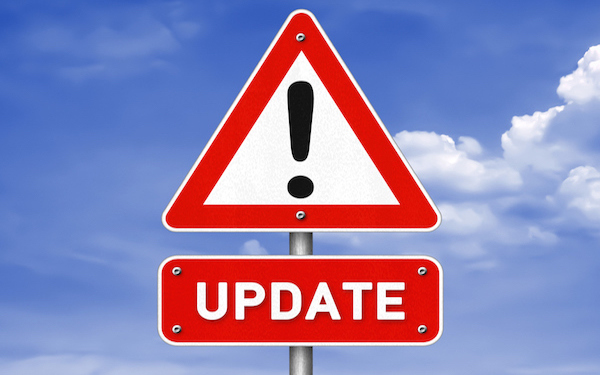Updates. As I wrote that word, I could see you already rolling your eyes. I get that it’s super annoying, but please bear with me here because it’s a necessary component of maintaining your digital system. The one major complaint that I get time and time again is, “why are there SO MANY updates??” Well, part of the reason is that we use so many different apps, and they all need updating. The other purpose is that the programs change, and it’s important to make sure that the programs we’re using are the most up to date versions. If you don’t then, it’s possible that there could be some added features that you may want to take advantage of.
1) Can improve systems – One thing that I see a lot with apps and programs is that people are not shy about sharing their opinions when the programs that they are using don’t work correctly, or how they were expecting, or as hard as they were hoping. With all of these complaints which do go back to the developers, there are going to be times when they are able and eager to fix the problem. The only issue is that for the item to get fixed, the end-users need to apply the updates, which will fix everything. The “End User” being you.
2) Fixes Issues – Say some developer gets a brilliant idea of how to improve their app. It’s a great idea, brilliant even! So they spend months writing the code and testing and checking and rechecking to make sure everything works the way it’s supposed to. When the updates are released, the first thing that programmers do is look to make sure that the program acts in a live environment the same way it worked in production. Sometimes, it doesn’t. Sometimes some unforeseen bugs or glitches need to be fixed.
3) Keeps up with modern technology – This may surprise a few of you (as it did me when I first learned it), but the internet changes. One way is because Government policies change. A great example is the European’s implementation of the GDRP in 2019. Another thing that can change is the hardware that is being used. Also, when technology improves, the apps that are used within that technology need to change. I remember once playing a game that I loved, I upgraded my phone to one with a bigger screen, and the app was the same size it was on the smaller screen, but it seemed WAAAY smaller because all the other apps had been updated. If a program isn’t told by the programmers to be able to fit inside a bigger screen, it won’t know-how. Without knowing how big the newest iPhone screen is going to be, I would imagine it’s very difficult to be able to program the apps to go to the sizes needed to work within the screen space.
Between innovative programmers, the various industries that apps serve, and people just wanting something different, you must realize that your apps are going to need updating every once and a while. I would advise setting up a schedule so that once a week (as an example), you set up a time where you update all of your apps all at once. That way, you don’t have to worry about how many apps need updating or when they need to be done by. Alternatively, what I do is simply set my app updater to auto-update whenever it’s on Wifi. That way, you don’t have to worry about updating your apps at all, nor when they need to be updated, nor if when they get updated if you’re going to be using your own data for the updates. I understand that the constant updates are frustrating, I really do, but it’s an essential piece of maintenance that is required to run your digital systems. Think about it like this; you wouldn’t run your car forever on the same tires, would you? No, of course not, the tires would wear out and break — same thing with your apps. Without the proper updates and fixes, the apps will (at one point or another) stop being able to function.
How many apps do you have to deal with?
Let me know in the comments section below. If you like this blog post and want to see more, you can follow me on Social Media (LinkedIn, Instagram, and Facebook @jasonlovefiles) or Subscribe to my blog to get new content delivered directly to your mailbox.

